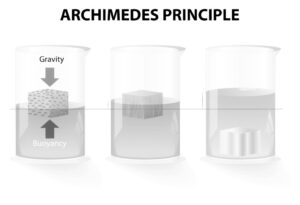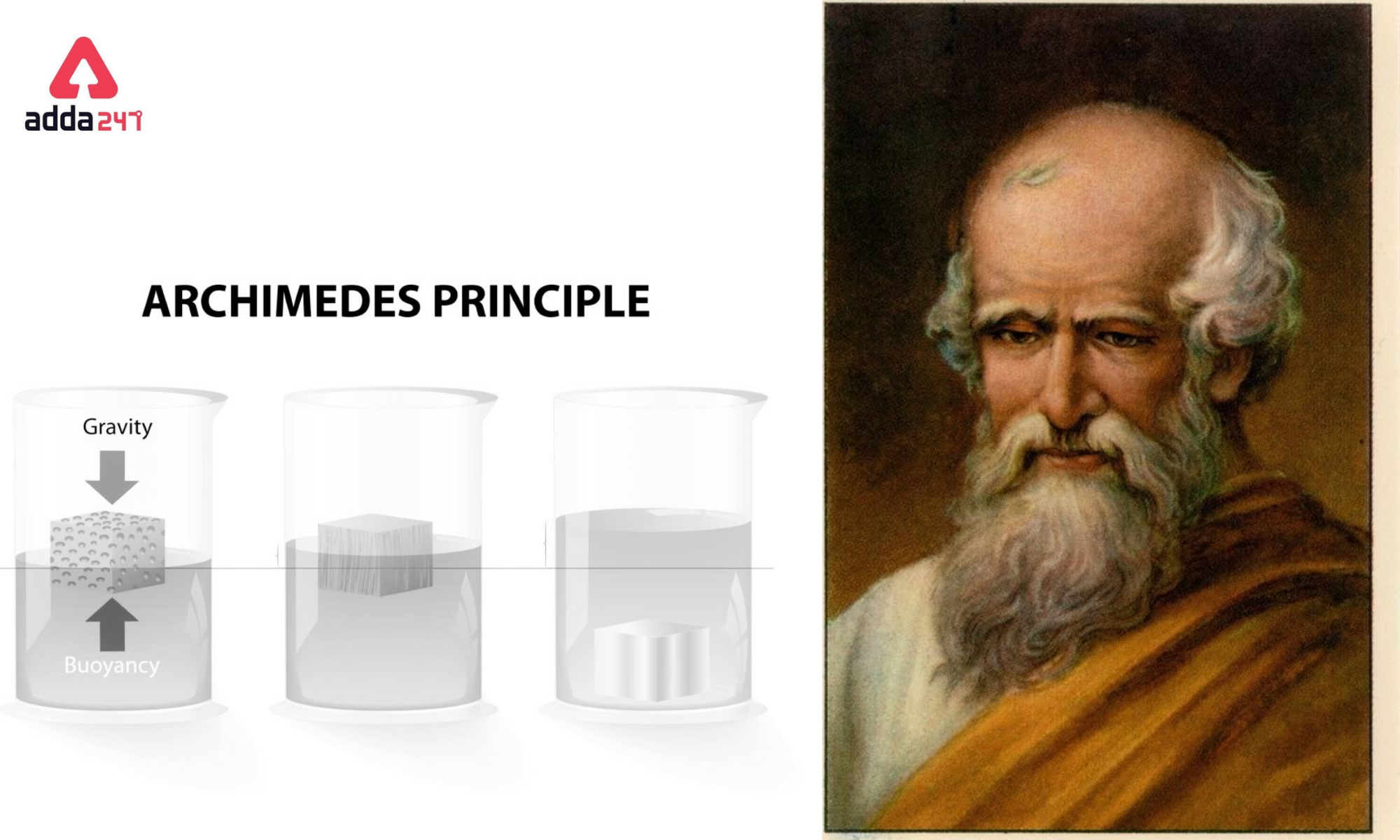Father of Mathematics
Achimedes and will know why is he called the father of Mathematics by seeing his life and work. Who is Father of Maths in India answer is Aryabhatta. father of mathematics Archimedes was a Greek mathematician, physicist, engineer, astronomer, and inventor who was born in the ancient Sicily city of Syracuse. He is recognised as one of classical antiquity’s foremost scientists. Archimedes, considered the greatest mathematician in ancient history and one of the greatest of all time, predicted modern calculus and analysis by using the concept of the infinitely small and the method of exhaustion to derive and rigorously prove a variety of geometrical theorems, including the area of a circle, the surface area and volume of a sphere, the area of an ellipse, the area under a parabola, the volume of a segment of a paraboloid.
Other mathematical contributions of Archimedes include obtaining an approximation of pi, defining and exploring the spiral that bears his name, and creating a system for expressing very high numbers via exponentiation. He also founded hydrostatics and statics, and was one of the first to apply mathematics to physical processes. In this field, Archimedes is credited for proving the theory of the lever, popularising the concept of centre of gravity, and formulating the law of buoyancy. He’s also known for inventing equipment like the screw pump, compound pulleys, and defensive battle machines to keep his hometown of Syracuse safe from assault. Archimedes perished at the siege of Syracuse, when a Roman soldier killed him against instructions not to hurt him. Cicero mentions visiting Archimedes’ grave, which was topped by a sphere and a cylinder that Archimedes had asked to commemorate his mathematical achievements.
Father of Maths- Archimedes’ Work
Father of mathematics Archimedes wrote various treatises in Greek that still extan:
- The surface area of any sphere of radius r is four times that of its largest circle (in current notation, S = 4πr2), and the volume of a sphere is two-thirds that of the cylinder in which it is inscribed (leading immediately to the formula for the volume, V = 4/3πr3). Archimedes was so pleased with the latter finding that he had a sphere inscribed in a cylinder placed over his tomb. A century and a half after Archimedes’ death, Marcus Tullius Cicero (106–43 bce) discovered the grave, which had been overgrown with plants.
- Until the discovery of infinite series expansions in India during the 15th century and Europe during the 17th century, Archimedes’ method of determining consisted of inscribing and circumscribing regular polygons with a large number of sides.
- Theoretical mechanics is said to have been founded by Archimedes. Much of that book, however, is undoubtedly not authentic, as it contains inept later additions or reworkings, and it appears likely that the basic principle of the law of the lever and—possibly—the concept of the centre of gravity were established on a mathematical basis by scholars prior to Archimedes. Instead, his contribution was to apply those notions to conic sections.
- With a base of 108 Archimedes devised a place-value system of notation. (He had no knowledge of the current Babylonian place-value system with base 60, therefore this was apparently an entirely unique idea.) The work is especially noteworthy because it offers the most thorough surviving description of Aristarchus of Samos’ (c. 310–230 BC) heliocentric system, as well as an account of Archimedes’ innovative process for determining the Sun’s apparent diameter by observation with an instrument.
Who is the Father of Mathematics and Their Life
Father of mathematics Archimedes may have spent some time in Egypt early in his career, but he spent the majority of his life at Syracuse, Sicily’s most important Greek city-state, where he had a close relationship with its monarch, Hieron II. Conon of Samos and Eratosthenes of Cyrene, two Alexandrian mathematicians, published Archimedes’ writings in the form of communication with the leading mathematicians of the day. father of mathematics was a key figure in the defence of Syracuse against the Roman siege in 213 BC, building war equipment that was so effective that the Romans were unable to seize the city for a long time. Archimedes was murdered in the sacking of Syracuse by the Roman general Marcus Claudius Marcellus in the late fall of 212 or the springtime of 211 BC.
father of maths Archimedes had such a low view of the kind of practical invention at which he excelled and to which he owed his contemporary renown, according to Plutarch (c. 46–119 ce), that he left no written work on the subject. While all of his known works, with the exception of a doubtful reference to a treatise called “On Sphere-Making,” were theoretical in nature, his interest in mechanics had a profound influence on his mathematical thinking. He not only wrote works on theoretical mechanics and hydrostatics, but his treatise Method Concerning Mechanical Theorems demonstrates that he employed mechanical reasoning as a heuristic mechanism for finding new mathematical theorems.
Who is the Father of Maths and Their Research

father of mathematics Archimedes’ principle, also known as the Physical Law of Buoyancy, asserts that any body whole or submerged in a medium (gas or liquid) at rest is acted upon by an upwardly, or buoyant, force whose magnitude is equivalent to the weight of the fluid displaced by the body. When an object’s weight is less than in the displaced fluid, the object rises, as in a block of wood discharged beneath the water’s surface or a helium-filled balloon pushed into the air. Though it descends when released, an object heavier than the amount of fluid it displaces has an apparent weight loss equal to the weight of the fluid displaced. In fact, a correction must be applied in some precise weighings to account for the buoyancy impact of the surrounding air.
Noticeable weight = Weight in air – Buoyancy
The Formula for the Buoyant Force is given by:
| Fb = ρ x g x V |
where ρ is the density of the medium, V is the submerged volume, and g is the gravitational acceleration.
Who is the Father of Mathematics in India
Aryabhatta is the father of Indian mathematics. Aryabhatta was a great mathematician and astronomer of ancient India. His major work is known as Aryabhatiya. It consists of spherical trigonometry, quadratic equations, algebra, plane trigonometry, sums of power series, and arithmetic. It also contains a table of sines and continued fractions.
Father Of Maths in Hindi
father of mathematics: आर्किमिडीज एक ग्रीक गणितज्ञ, भौतिक विज्ञानी, इंजीनियर, खगोलशास्त्री और आविष्कारक थे जिनका जन्म प्राचीन सिसिली शहर सिरैक्यूज़ में हुआ था। उन्हें शास्त्रीय पुरातनता के अग्रणी वैज्ञानिकों में से एक माना जाता है। आर्किमिडीज, जिसे प्राचीन इतिहास में सबसे महान गणितज्ञ माना जाता है और सभी समय के महानतम में से एक, ने असीम रूप से छोटे की अवधारणा का उपयोग करके आधुनिक कलन और विश्लेषण की भविष्यवाणी की और क्षेत्र सहित विभिन्न प्रकार के ज्यामितीय प्रमेयों को प्राप्त करने और कठोरता से सिद्ध करने की विधि का उपयोग किया। एक वृत्त का, सतह का क्षेत्रफल और एक गोले का आयतन, एक दीर्घवृत्त का क्षेत्रफल, एक परवलय के नीचे का क्षेत्र, एक परवलय के एक खंड का आयतन।
आर्किमिडीज के अन्य गणितीय योगदानों में पाई का एक सन्निकटन प्राप्त करना, उस सर्पिल को परिभाषित करना और उसकी खोज करना शामिल है जो उसका नाम रखता है, और घातांक के माध्यम से बहुत अधिक संख्या व्यक्त करने के लिए एक प्रणाली बनाना। उन्होंने हाइड्रोस्टैटिक्स और स्टैटिक्स की भी स्थापना की, और भौतिक प्रक्रियाओं में गणित को लागू करने वाले पहले लोगों में से एक थे। इस क्षेत्र में, आर्किमिडीज को लीवर के सिद्धांत को साबित करने, गुरुत्वाकर्षण के केंद्र की अवधारणा को लोकप्रिय बनाने और उछाल के नियम को तैयार करने का श्रेय दिया जाता है। उन्हें अपने गृहनगर सिरैक्यूज़ को हमले से सुरक्षित रखने के लिए स्क्रू पंप, कंपाउंड पुली और रक्षात्मक युद्ध मशीनों जैसे उपकरणों का आविष्कार करने के लिए भी जाना जाता है। सिरैक्यूज़ की घेराबंदी में आर्किमिडीज़ की मृत्यु हो गई, जब एक रोमन सैनिक ने उसे चोट न पहुँचाने के निर्देशों के विरुद्ध उसे मार डाला। सिसरो ने आर्किमिडीज की कब्र पर जाने का उल्लेख किया है, जिसके ऊपर एक गोला और एक सिलेंडर था जिसे आर्किमिडीज ने अपनी गणितीय उपलब्धियों को मनाने के लिए कहा था।
गणित के जनक: आर्किमिडीज का कार्य
आर्किमिडीज ने ग्रीक में विभिन्न ग्रंथ लिखे जो अभी भी प्रचलित हैं:
त्रिज्या r के किसी भी गोले का पृष्ठीय क्षेत्रफल उसके सबसे बड़े वृत्त का चार गुना होता है (वर्तमान संकेतन में, S = 4πr2), और एक गोले का आयतन उस बेलन का दो-तिहाई होता है जिसमें वह खुदा हुआ होता है। आयतन का सूत्र, V = 4/3πr3)। आर्किमिडीज बाद की खोज से इतने प्रसन्न हुए कि उनकी कब्र के ऊपर रखे सिलेंडर में एक गोला खुदा हुआ था। आर्किमिडीज की मृत्यु के डेढ़ सदी बाद, मार्कस टुलियस सिसरो (106-43 ईसा पूर्व) ने कब्र की खोज की, जो पौधों के साथ उग आया था।
15वीं शताब्दी के दौरान भारत में और 17वीं शताब्दी के दौरान यूरोप में अनंत श्रृंखला विस्तार की खोज तक, आर्किमिडीज की निर्धारण की पद्धति में बड़ी संख्या में पक्षों के साथ नियमित बहुभुजों को अंकित करना और परिसीमित करना शामिल था।
कहा जाता है कि सैद्धांतिक यांत्रिकी की स्थापना आर्किमिडीज ने की थी। हालाँकि, उस पुस्तक का अधिकांश भाग, निस्संदेह प्रामाणिक नहीं है, क्योंकि इसमें अयोग्य बाद के जोड़ या पुनर्विक्रय शामिल हैं, और ऐसा प्रतीत होता है कि लीवर के कानून का मूल सिद्धांत और संभवतः- गुरुत्वाकर्षण के केंद्र की अवधारणा को एक पर स्थापित किया गया था। आर्किमिडीज से पहले के विद्वानों द्वारा गणितीय आधार। इसके बजाय, उनका योगदान उन धारणाओं को शंकु वर्गों पर लागू करना था।
108 के आधार के साथ आर्किमिडीज ने अंकन की एक स्थान-मूल्य प्रणाली तैयार की। (उसे आधार 60 के साथ वर्तमान बेबीलोनियाई स्थान-मूल्य प्रणाली का कोई ज्ञान नहीं था, इसलिए यह स्पष्ट रूप से एक पूरी तरह से अनूठा विचार था।) यह काम विशेष रूप से उल्लेखनीय है क्योंकि यह समोस के एरिस्टार्कस का सबसे संपूर्ण जीवित विवरण प्रदान करता है (सी। 310- 230 ईसा पूर्व) हेलियोसेंट्रिक प्रणाली, साथ ही एक उपकरण के साथ अवलोकन द्वारा सूर्य के स्पष्ट व्यास को निर्धारित करने के लिए आर्किमिडीज की नवीन प्रक्रिया का एक विवरण।
गणित के जनक: आर्किमिडीज का जीवन
आर्किमिडीज ने अपने करियर की शुरुआत में मिस्र में कुछ समय बिताया हो सकता है, लेकिन उन्होंने अपना अधिकांश जीवन सिसिली के सबसे महत्वपूर्ण ग्रीक शहर-राज्य सिरैक्यूज़ में बिताया, जहां उनका अपने सम्राट हिरोन II के साथ घनिष्ठ संबंध था। कॉनन ऑफ सैमोस और एराटोस्थनीज ऑफ साइरेन, दो अलेक्जेंड्रिया के गणितज्ञों ने उस समय के प्रमुख गणितज्ञों के साथ संचार के रूप में आर्किमिडीज के लेखन को प्रकाशित किया। वह 213 ईसा पूर्व में रोमन घेराबंदी के खिलाफ सिरैक्यूज़ की रक्षा में एक प्रमुख व्यक्ति थे, युद्ध उपकरण का निर्माण जो इतने प्रभावी थे कि रोमन लंबे समय तक शहर को जब्त करने में असमर्थ थे। आर्किमिडीज की 212 के अंत में या 211 ईसा पूर्व के वसंत ऋतु में रोमन जनरल मार्कस क्लॉडियस मार्सेलस द्वारा सिरैक्यूज़ को बर्खास्त करने में हत्या कर दी गई थी।
प्लूटार्क (सी। 46-119 सीई) के अनुसार, आर्किमिडीज के पास उस तरह के व्यावहारिक आविष्कार के बारे में इतना कम दृष्टिकोण था जिसमें उन्होंने उत्कृष्ट प्रदर्शन किया और जिसके लिए उन्हें अपने समकालीन प्रसिद्धि का श्रेय दिया गया, कि उन्होंने इस विषय पर कोई लिखित काम नहीं छोड़ा। जबकि उनके सभी ज्ञात कार्य, “ऑन स्फीयर-मेकिंग” नामक एक ग्रंथ के एक संदिग्ध संदर्भ के अपवाद के साथ, प्रकृति में सैद्धांतिक थे, यांत्रिकी में उनकी रुचि का उनकी गणितीय सोच पर गहरा प्रभाव था। उन्होंने न केवल सैद्धांतिक यांत्रिकी और हाइड्रोस्टैटिक्स पर काम लिखा, बल्कि उनके ग्रंथ मेथड कंसर्निंग मैकेनिकल थ्योरम से पता चलता है कि उन्होंने नए गणितीय प्रमेयों को खोजने के लिए यांत्रिक तर्क को एक अनुमानी तंत्र के रूप में नियोजित किया।









 SLAT Exam Pattern 2026, Total Marks, Typ...
SLAT Exam Pattern 2026, Total Marks, Typ...
 CLAT UG 2026 Preparation Strategy: 60-Da...
CLAT UG 2026 Preparation Strategy: 60-Da...
 NEET Crash Course 2026 For Droppers/Repe...
NEET Crash Course 2026 For Droppers/Repe...














